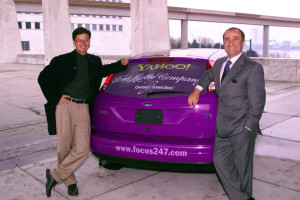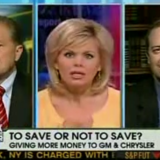I can remember Ford Motor CEO Jacques Nasser standing up in front of the Detroit auto show in January 2000 with Jerry Yang, the founder of Yahoo. I was covering the show for U.S. News & World Report.
It was the moment when it dawned on the auto industry that two universes were beginning to collide–the automotive world and the Silicon Valley tech world.
Over the next 15 years, the two camps have circled each other warily. Silicon Valley didn’t know how to make cars; Detroit didn’t know how to create software that truly engaged with drivers. Tesla appeared on the scene and although it still isn’t profitable, it has fueled imaginations on both sides of the great digital divide.
Now we are seeing each side strike up alliances that will shape the future of both industries. Cars have as many semiconductors and lines of software code as early spacecraft did. GM’s Chevy division has signed up with Apple CarPlay and Google’s Android Auto. Tesla is hiring engineers by the boatload according to the Wall Street Journal. Ford Motor and Toyota Motor are opening offices in the Valley to scoop up talent. Ford has moved away from relying on Microsoft for its Sync system and embraced BlackBerry’s more intuitive software, which I described in Chief Executive earlier this year. It feels a great deal like a SmartPhone.
http://t.co/IlOUNeMmPt #Driving Technology: The Future Is Now #sustainability #communications #electric http://t.co/jy6DZxtA2i
— Chief Executive (@ChiefExecGrp) May 26, 2015
The prize at the end of the rainbow for everyone seems to be increasingly intelligent and connected vehicles even if the vision of completely autonomous cars can never be achieved. Precisely which software can be best blended with Detroit’s metal? Who is going to earn the greater share of the profits from these alliances? Come back in another 15 years and maybe we’ll have the answers. This is going to be a fascinating space to watch.






